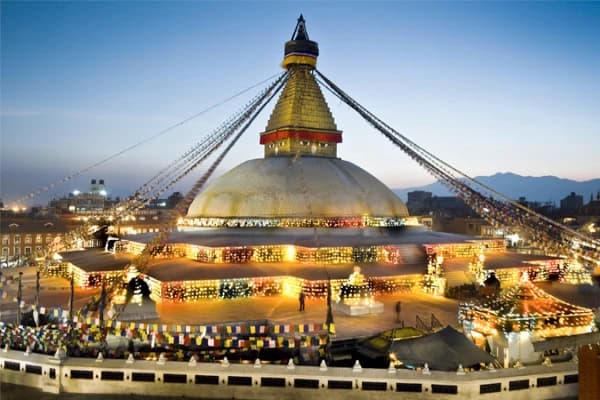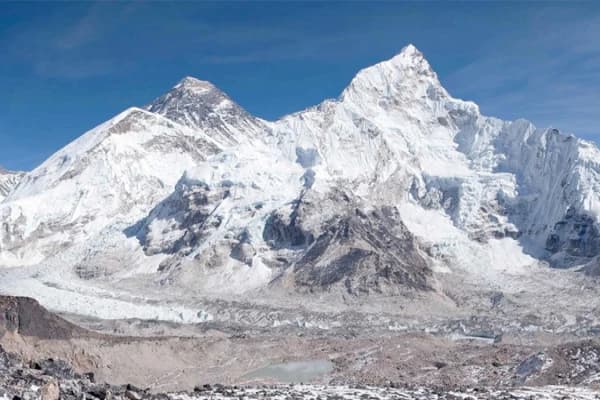The Everest Base Camp Trek is supposed to be quite an adventure for many people. This trek usually has surprises related to hidden extra costs and difficult situations. It can become a challenging journey if one does not know the Everest Base Camp trek cost per person and how to handle the altitude and frequent weather changes. Most travelers who go there do not estimate the budgeting and physical training well enough, which creates several surprises on their path.
Picture yourself on the trek amidst the beautiful beauty of the Himalayas, and you realize halfway that your budget is burnt or you are sick due to altitude sickness because of poor preparation. Furthermore, incorrect estimations of the Everest Base Camp Trek cost for Nepali trekkers and unexpected expenses make the whole experience exhausting and tiring.
You can avoid such pitfalls by familiarizing yourself with the 2025 Everest Base Camp trek packages, planning a budget, and engaging in physical training. Knowing the costs and challenges beforehand makes this trek in Nepal a fun and rewarding experience; it allows you to embrace the Everest Region's adventure without worrying about surprises.
Start planning your Everest Base Camp trek 2025 today and ensure you’re ready for the adventure of a lifetime. Prepare yourself physically and financially to make the most of your 2025 journey!
Why Everest Base Camp Remains a Dream Destination in 2025 and Beyond?

- The Everest Base Camp is at the foot of the world's highest peak and provides an excellent view that leaves trekkers in awe and unforgettable memories.
- The trek immerses one in rich Sherpa culture, enabling one to connect with the local culture, taste authentic cuisine, and witness the hospitality of the Sherpa people.
- Varied Everest Base Camp trek packages are available for the experienced trekker and the beginner alike.
- Trekkers walk through lush green valleys up to towering, snow-capped mountains, enjoying varied ecosystems and incredible scenery that makes every step a visual treat.
- Many consider the trek to Everest Base Camp a once-in-a-lifetime adventure, accomplishing any adventure or nature lover's greatest dreams.
- The Everest region is known not only for its stunning landscapes but also for its unique and diverse wildlife. The Everest Region's wildlife is remarkable, with the Sagarmatha National Park, a UNESCO World Heritage Site, home to endangered species like the snow leopard, red panda, Himalayan tahr, and musk deer.
- With much-improved infrastructure and various options for trekking, Everest Base Camp is increasingly becoming reachable, thus making it an attractive destination for any adventurer who plans to make an adventure in 2025 and beyond.
Breaking Down the Costs
Understanding the cost involved in the Everest Base Camp will make your journey smooth and pleasant. Proper budgeting keeps all financial surprises at bay and helps you trek great. This section outlines critical expenses, including permits, accommodation, food, transportation, and gear, so you're well-prepared for the journey ahead.
Trekking Permits and Fees
These include the Sagarmatha National Park permit, which costs around NPR 3,000 (approximately USD 25) for foreign trekkers, and the TIMS card, which costs about NPR 2,000 (approximately USD 17). These permits cost approximately NPR 5,000 (about USD 42), but of course, you can expect that prices may have gone up or that different documents are needed when you make your plans for the trek.
You can even be fined without them or turned back, so make it one of your priorities.
Accommodation Costs
The prices of budget accommodations range from approximately NPR 1,500 to NPR 3,000 (about USD 13 to USD 25) per night, while charges for mid-range lodges go from NPR 3,000 to NPR 5,000 (approximately USD 25 to USD 42) per night. The prices inflate from NPR 4,000 to NPR 8,000 (approximately USD 34 to USD 67) per night in more popular areas like Namche Bazaar.
Planning will always be advantageous in securing accommodations since places fill quickly during peak trekking seasons.
Food and Beverages
On the Everest Base Camp Trek, one can find simple nutritional meals for around NPR 300 to NPR 800 (about USD 2.50 to USD 6.50) for a typical meal in a tea house. For the most part, breakfast would cost around NPR 300 to NPR 500 (which translates into about USD 2.50 to USD 4.25). Lunch and dinner could be more costly, especially if you ordered some Western dishes. Therefore, a reasonable budget of around NPR 1,500 to NPR 2,500 (about USD 13 to USD 21) per day for food and beverages would be quite adequate.
Be prepared to pay much more at higher altitudes, as food prices will grow exponentially as one goes higher.
Guide and Porter Services
It is highly recommended that you hire a guide to trek to Everest Base Camp. A guide typically takes NPR 3,000 to NPR 5,000 (approximately USD 25 to USD 42) daily. Depending on their weight, porters normally get about NPR 2,500 to NPR 3,500 (approximately USD 21 to USD 30) daily. Most trekkers find hiring a guide and a porter pretty convenient, which might cost from NPR 5,500 to NPR 8,500 (approximately from USD 46 to USD 72) per day.
Also, tips should be provided at the end of the trek, adding 10% to 15% to the overall price.
If you're curious about trekking independently, check out this guide on Can You Trek to Everest Base Camp on Your Own.
Transportation To and From the Trek Start Point
Transportation from Kathmandu to Lukla, the starting point of your trek, includes the cost of transportation, which may be huge in your budget. A round-trip flight ticket from Kathmandu to Lukla costs around NPR 10,000 to NPR 12,000 (approximately USD 85 to USD 102). You should make flight reservations in advance so you get better prices. Add NPR 1,500 to NPR 2,500 (approximately USD 13 to USD 21) for transportation to and from Kathmandu Airport.
You will need around NPR 12,500 to NPR 14,500 (approximately USD 106 to USD 123) for transportation.
Gear and Equipment
Investing in good trekking gear will ensure a successful and comfortable journey to Everest Base Camp. Based on what you already have, budget for clothes, footwear, a warm sleeping bag, trekking poles, and other necessary equipment.
The costs vary widely, but if you are starting from scratch, then you can roughly expect to spend from NPR 20,000 to NPR 40,000 (more or less, depending upon the quality of the gear you buy), which is around USD 170 to USD 340, depending on what exactly you purchase. The gear is also available for rent at the shop and its price ranges from NPR 1,000 to NPR 2,000 (approximately USD 8.50 to USD 17) per item per day.
Buy layers of clothes that will suffice for any type of weather, as temperatures drastically drop during the trek.
Recommended Read: Everest Base Camp Trek Packing List
Emergency Fund
An emergency fund is essential for trekking in these remote areas, such as Everest Base Camp. Setting aside approximately NPR 15,000 to NPR 30,000 (around USD 127 to USD 255) for contingencies like medical emergencies, changes in travel plans, or detours along the way will be enough to provide peace of mind. One can have cash in hand, as many remote areas do not have reliable access to ATMs or card payment options.
The financial cushion will see one through any obstacle that might come in the way of their adventure.
Preparing for the Everest Base Camp Trek: Challenges, Tips, and Symptoms

This is a fascinating journey, but the Everest Base Camp Trek has different challenges, and any trekker must be prepared for them. The difficulty of the Everest Base Camp trek varies, with high altitudes, unpredictable weather, and steep ascents being the main obstacles. Trekkers often experience altitude sickness as they ascend above 3,000 meters, and the thinner air can make breathing more difficult.
Understanding these challenges may help you plan better and make the experience more enjoyable.
Altitude Sickness
High altitudes fight off the body when a person goes up too quickly, which causes altitude sickness. Symptoms include headaches, nausea, and dizziness, all of which can turn into severe conditions if not taken seriously—HAPE or HACE. Proper acclimatization is necessary to avoid severe health perils because going higher in altitude requires patience to adapt your body.
Symptoms:
- Constant headaches
- Dizziness and lightheadedness
- Nausea and vomiting
- Fatigue and shortness of breath
- Sleep disturbances or restlessness
Tips:
- Ascend gradually: The ascent rate should be no more than 300-500 meters daily. Rest for a day after every increase to achieve complete acclimatization.
- Hydrate well: Drink 3-4 litres daily to keep your body well-hydrated. Dehydration accelerates the onset of AMS and hinders your body's acclimatization at a high altitude.
- Avoid alcohol and smoking: These delay oxygen absorption and result in dehydration, making it difficult for the body to acclimate to heights.
- Listen to your body: If symptoms like headaches or dizzy sensations start occurring, stop ascension immediately; rest or go down to lower altitudes if necessary.
- Take medication: Consult your doctor about prophylaxis medication, such as Diamox, to reduce symptoms during the trek.
Weather Conditions
Climate change has already begun to alter the weather patterns over the Everest region, which has a significant consequence on the trekking seasons. Due to increasing temperatures, hikers experience changing weather, increased threats of natural calamities, and changes in the usual trekking windows. Understanding these impacts will help make an adventure safe and thriving.
Effects of Climate Change:
- Unpredictable weather patterns are due to the earlier or late start of monsoons.
- Increased risk of natural disasters such as landslides and avalanches.
- A shorter window for trekking because of changing weather patterns requires more flexibility in planning.
- Unpredictable temperature differences cause a sudden change in weather conditions.
- Changes in ecosystem processes and functions affect flora and fauna along the trek routes.
Tips:
- Keep Informed: Before and during your trek, regularly check forecasts and updates from reliable sources to anticipate any changes in conditions.
- Flexible Itinerary: A flexible trekking schedule that meets the changes in weather conditions up to the time of actual trekking, along with the guides' safety recommendations.
- Invest in Quality Gear: Invest in top-of-the-line, weather-resistant gear to ensure comfort and safety in unpredictable weather conditions.
- Prioritize Safety: Be safety-conscious at all times. Rather than attempting to reach the destination, if conditions worsen, turn back or seek shelter until it is safe to continue.
- Ecological Footprint Teaching: Climate change has brought many changes to the Everest region. By minimizing your environmental footprint and supporting sustainable tourism initiatives, you can get first-hand experience in responsible trekking.
Recommended Read:
How Cold is Mount Everest
Physical Fitness
Physical fitness is essential for a successful Everest Base Camp Trek. Trekking requires walking for long days at high altitudes, which is physically demanding on the body. Good preparation increases your endurance and helps your system adapt better to the changes in altitude, making the trek easier to negotiate.
Symptoms of Poor Physical Fitness
- Fatigue
- Shortness of Breath
- Muscle Weakness
- Joint Pain
- Increased Heart Rate
Tips:
- Start Training Early: Fitness training for the trek should begin at least two to three months in advance. Your body will need this period to adapt and strengthen itself in preparation for long days of walking.
- Set realistic goals: Based on your present physical fitness status, set certain achievable goals concerning your fitness. This way, you can gradually increase the depth of your workouts to maintain motivation and avoid overtraining.
- Listen to your body: If you encounter any signals from the body during training sessions, you must pay attention to them and rest to allow the organism to recover. In this case, you can avoid injuries.
- Practice Hiking with Gear: Go on practice hikes by carrying all the gear you want to take with you on the trek. This helps your body get used to carrying that much weight in a backpack and learn how to fit the gear comfortably.
- See a Fitness Professional: Look for a fitness professional who prepares people for treks. A fitness professional will give personalized attention and help develop a training program specific to your needs.
Final Thoughts: Is 2025 the Right Time for Your Everest Base Camp Adventure?

While weighing options for the trek to Everest Base Camp 2025, one must consider a few great opportunities this year and a few challenges. This year might be one of the best times to go on this life-changing journey, with improved trekking packages and awareness about environmental impacts. However, proper preparation will go a long way in ensuring the journey is safe and enjoyable.
To make your trip even more seamless, consider booking with Real Adventure Nepal, a trusted and experienced trekking agency that offers expertly guided treks. They provide well-structured itineraries, ensuring your adventure is safe and enjoyable, even in the cold December weather.
Whether for fantastic scenery, adventure, or physical challenges, the Everest Base Camp trek can create lifetime memories. Remember these pointers to enhance your journey when considering planning, costs, fitness requirements, and possible altitude sickness. With proper planning, let 2025 be the year to conquer Everest Base Camp and fulfill your dream of standing amidst the towering Himalayas.
Explore Everest Region Trekking Packages:
Everest Panorama Trek - 9 Days
Everest Base Camp via Cho La Pass & Gokyo Lakes Trek- 19 Days
Everest View Luxury Lodge Trek - 5 Days
FAQs
How much will it cost to go to Everest Base Camp in 2025?
Estimates of various costs to trek to Everest Base Camp in 2025 differ according to factors related to your trekking package, duration, and personal preference. Typically, expect the average estimate of $1,200 to $3,000 for permits, accommodation, food, guides, and other needs. Be prepared also for gear, transportation, and personal expenses.
How much does going to Everest Base Camp by helicopter cost?
The trek of the helicopter ride to Everest Base Camp is an eye-catching but costly expedition. The roundtrip by helicopter generally costs between USD 1500 and USD 4000 per head. Your ultimate cost depends upon the operator and the different services included in your deal.
How challenging is Everest Base Camp?
The trek to Everest Base Camp is graded mainly as moderately tricky due to the high altitude and unpredictable weather. Since the overall gain in altitude by the trekkers is gradual, there is every possibility of altitude sickness if one does not get adequately acclimatized. Physically fit, mentally strong, and capable of adjusting to situations as they come, for which one must be adequately prepared. The trek demands physical fitness, mental stamina, and the ability to adapt to situations as they come, for which one has to be adequately prepared.
Can a normal person trek to Everest Base Camp?
Yes, a regular person can make it to Everest Base Camp with proper preparation and fitness training. Though previous trekking experience may be helpful, it is not necessary. Many people who are appropriately trained, acclimatized, and supported with all the requirements make the trek without problems, enjoying the magnificent scenery and attaining the goal of reaching Base Camp.
Which month is best for the Everest Base Camp Trek?
The best months for the Everest Base Camp trek are typically October and November, when the weather is clear and dry during autumn. April and May are also famous due to warmer temperatures and blooming rhododendron forests. However, December offers a quieter and more serene experience with breathtaking winter scenery.



-(1200-x-675-px).webp&w=3840&q=75&dpl=dpl_CtNAyRzUAwPdWKDCFxYk5p2VryPh)

-(5).webp&w=1200&q=75&dpl=dpl_CtNAyRzUAwPdWKDCFxYk5p2VryPh)
